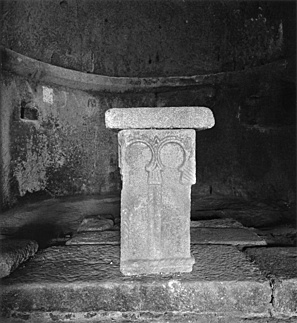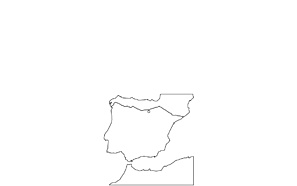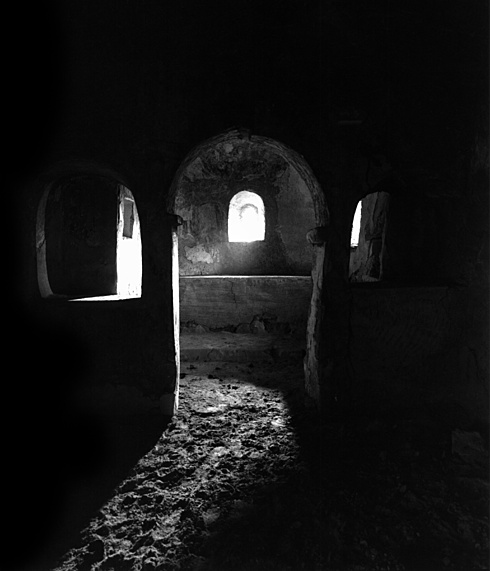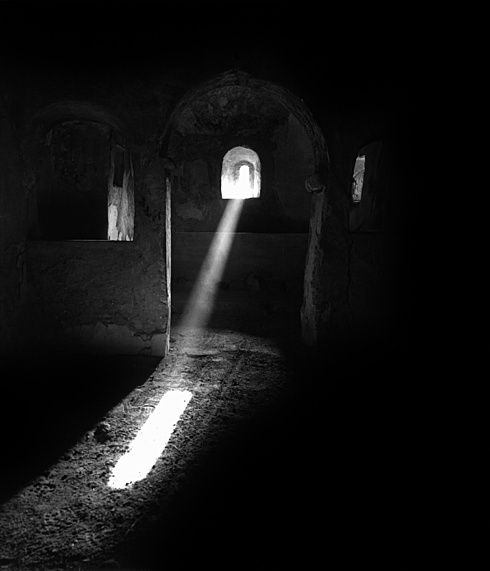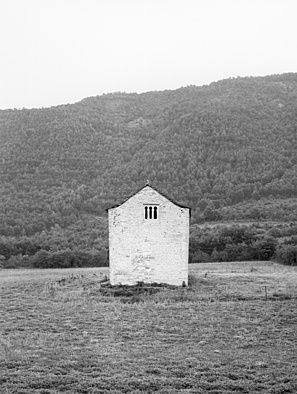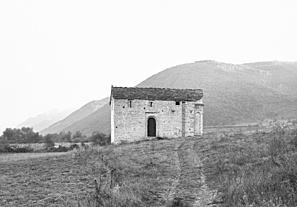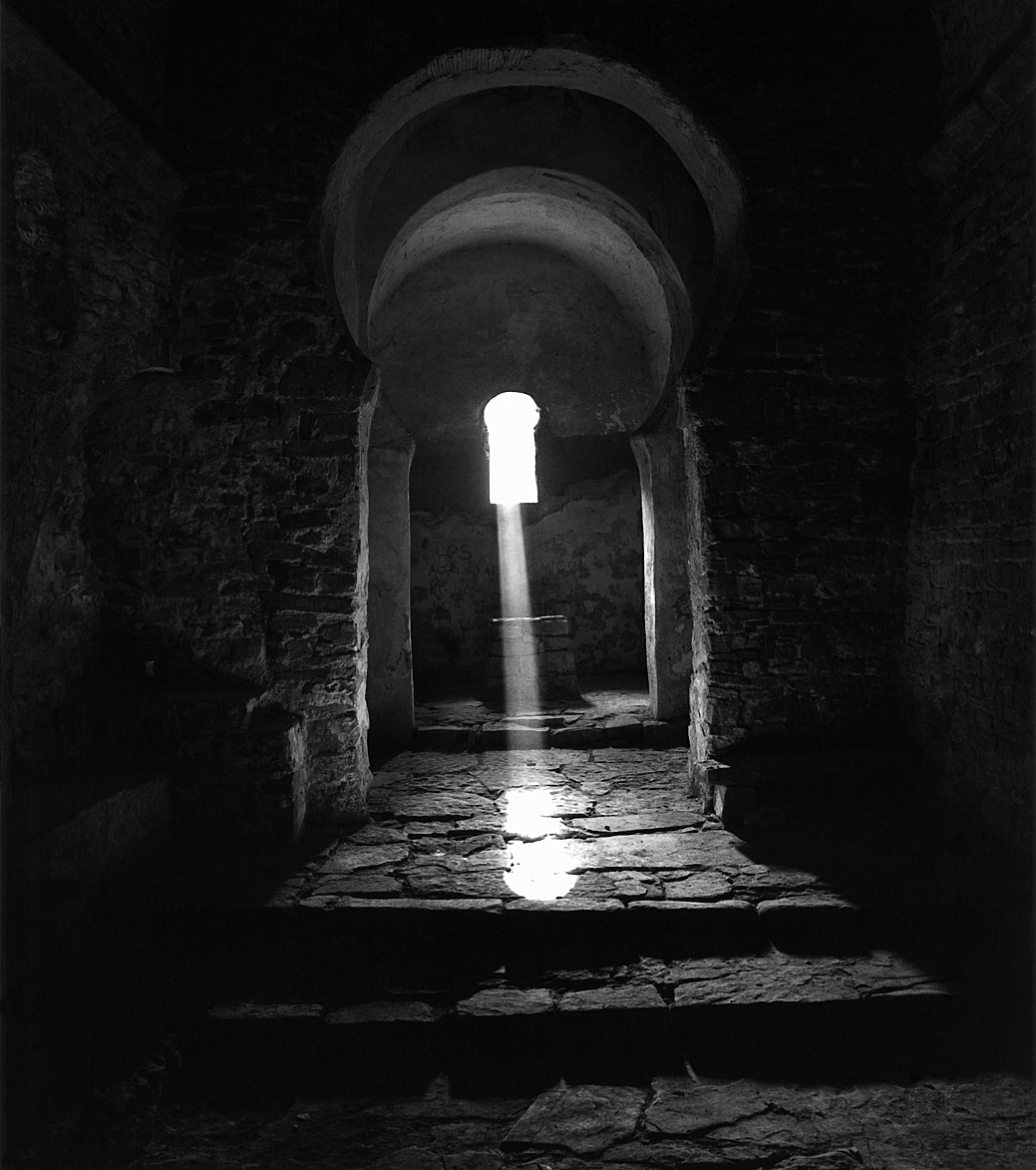January
The month when ...
... the water of the rivers seems warmer and the earth begins to steam. The sap rises in the trees. The birds mate; the Valencian falcons stay in their nests and begin to mate. Horses graze in the young grass; cows calve abundantly; and there is milk galore. Geese and ducks hatch their young. Seedlings for all kinds of pomaceous fruit, and cuttings, too, are planted. The props for olive, pomegranate and other trees are driven into the ground. The early daffodils are in full bloom; the first vine shoots al ready climb their espaliers and the plants for grapes not meant for the table are pruned; the first purslane is sown and the first sugar cane harvested. Citron jam is prepared, and also treacle from sour lemons; and carrots are bottled.
February
The month when ...
... the young birds hatch out, the bees reproduce, the creatures of the sea begin their migration; our womenfolk begin to incubate the silkworms; the cranes return to the river islands. Saffron bulbs are plan ted and summer vegetables sown; many trees are al ready in Ieaf. There are truffles, wild asparagus and fennel in abundance. Pear trees and apple trees are grafted, young cuttings plan ted, and the vine shoots transplanted. We may be bled and, if need be, take our medicines, though they must not be too strong. This is also the month during which instructions on recruitment for the summer months are issued. Swallows and storks return to their nests.
March
The month when ...
... budding is done on the fig trees, known in the vernacular as "tarqi"; the early corn stands up straight; most of the fruit trees are now coming into leaf; it is the time when the fern ale Valencian falcons lay their eggs in their nests on the river islands and brood for thirty days until the beginning of April. Sugar cane is planted. The early roses and lilies begin to bloom and, in the vegetable gardens, the broad beans take shape. Quails suddenly make their appearance; the silkworms hatch out; storks and May fish ascend the rivers from the sea. Cucumbers are planted, and also cotton, safflower and eggplant. This is also the month when the stewards are instructed in writing to buy horses for the government. Crickets arrive in great multitude, and orders are given for their extermination. Citronella and origanum are sown. Jt is the mating season for peacocks, storks, pigeons and many other birds.
April
The month when ...
... rose water, rose oil, rose syrup and rose preserves are made; violets are picked for the making of syrup and oil; or they are pickled; syrup is made from rue-herb; there are cucumbers. The palms are artificically pollinated and the palm leaves are cut. The early grapes begin to form, tho olive trees blossom, and the figs come out; the Valencian falcons hatch out their young ones; it takes thirty days for them to grow their feathers. The fawns are born. Supports are made for the lemon trees and jasmine cuttings are planted in the ground. The wild carrots are ripe and harvested for the making of jam; and then there are poppies, pomegranates, ox-tongues and the leaves and petals of the dyer's weed from which juice is extracted. Jt is also the month when henna, basil, cauliflower, rice and beans are sown; the green gourds and aubgergines are dug out of their forcing beds; small melons are sown, and also cucumber. Peafowl, storks and many other birds lay their eggs and begin to brood.
May
The month when ...
... "farik" is gathered; olives and grapes begin to take shape; the bees make their honey; the first early fruits: apples, pears, plums, apricots, sweet melons, cherries; preserves are made from nuts, and syrup from pipless "sabi" apples; poppy seeds are harvested for the making of syrup. The fruit of the sycamore ripens in the Orient. We gather seeds from rue-herb, celery, dill, houseleek, black poppy, mustard, watercress and "taratit" and extract juice from them; the flowers of the common camomile are gathered for the making of oil. Jt is also during this month that instructions are issued for the requisitioning of kermes, silk and fuller's earth for the "tiraz". From now until the end of July, parchment is made from the skins of fawns and gazelles. The Valencian falcons begin to moult, a process which continues until the beginning or the end of August, depending on their strength and vitality. The young falcons and kites hatch out and it takes thirty days for them to fledge. The summer cranes return form the river islands; peafowl, coots, storks, pigeons, sparrows and many other birds hatch out of their eggs.
June
The month when ...
... the grain on the threshing floor is weighed and the granary keepers are entrusted with the task of collecting the tithes. The first grapes are harvested. The figs arrive from the coastal regions; walnuts and pine cones ripen; the first melons appear; juice is extracted from green grapes, blackberries and plums. Young pigeons are caught; venison is pickled in brine. The wild ducks on the river islands and the lakes hatch out of their eggs; once fledged, they fly to the rivers and streams. This is also the month when written orders are given for the collecting of yew wood which is used for the making of bows. Among the medicinal herbs harvested during this month are psyllium, flowers of absinthe, from which juice is extracted, yellow meliIot, camomile, epithyme, flax, polium, peppergras and safflower. We sow cabbage which is planted out in August. At the beginning of the month we may be bled, if need be, and take medicines.
July
The month when ...
... grain is harvested and barley is threshed. The grapes and the pistachios ripen. The sweet pears and sour apples are ready for plucking. Jam is made form pumpkins, and syrup from apples and pears. Before the end of the month the grapes have ripened fully and the harvest is estimated on the spot. The following medicinal herbs are ready for gathering: mustard seeds, baby's breath, marjoram, marsh mallow, "seseli" seeds, that is to say, stinking fennel. Waterfowl are in great abundance. Young partridges are hunted. The figs are dried in the plains. The "mukita" ripen.
August
The month when ...
... juice is extracted from two different kinds of pomegranate and mixed with fennel water to make a thick ointment for the treatment and prevention of cataracts and other diseases of the eye. The first dates and jujubes begin to ripen, the smooth-skinned peaches are ready far plucking, the acorns take shape, the water melons, known as "al-hindi", are now ripe. The Iate-ripening sweet pears are picked and jam is made from them. The grey mullets Ieave the sea for the rivers and they are caught in large numbers. Pilchards are also in abundance. The following medicinal herbs are ready far gathering: sumac, the seeds of the white poppy, from which syrup is made, rue seeds and "badaward", stavesacre seed and abrotanum. Instructions are given for the requisitioning of silk and indigo for the "tiraz". The gardens are planted with autumn beans, sky-blue stock, turnips, carrots, chards. Jt is the mating season of the ostriches and one can hear the loud call of the males from afar.
September
The month when ...
... the peaches and jujubes, the pomegranates and quinces ripen fully; sugar cane and bananas begin to grow; certain olives turn black; there is fresh oil, acorns and chestnuts; the berries of the mountain ash ripen. The fields are ploughed and sown in the mountains of Cordóba. The first asparagus shoots appear. The Niebla vultures leave the ocean for the mainland and are hunted until the beginning of spring; the swallows fly back to the coast. Towards the end of the month the black heads of the seagulls turn white and retain this colour until the beginning of spring. Jt is during this month that instructions are given for the requisitioning of madder red. Walnuts and cedar nuts are picked; henna and vegetables are uprooted. The following medicinal herbs are gathered; bay leaf seeds, from which oil is extracted, bottle gourd and henbane.
October
The month when ...
... the olives are ready for harvesting and picking commences. Jt gets much too cold for the white clothes of the summer. Warmer garments of raw silk, wool or other fabrics are now worn. Jt is the lambing season and there is milk in abundance. The white and black starlings make their appearance and the winter cranes arrive from the islands. In Egypt, embalming oil is extracted from the Judas tree. Syrup is made from quinces and from late-ripening sour apples. White lead, copper green and red lead are made. Fennel seeds, aniseed and Iettuce seeds are gathered. anions are sown from now until the end of November.
November
The month when ..
... sowing activities reach their peak. Acorns, chestnuts, myrtle seeds are gathered for the making of syrup. The trees lose their leaves. Summer vegetables, such as gourds, aubergines, beans, purslane, "Yemenite vegetables" and basiI, have now come to an end, but there are winter vegetables in abundance, such as cabbage, turnips, chards, carrots, leek and radish. The sugar cane is harvested. The autumn beans, which were sown in August, now start to take shape; vegetable seeds, lemon trees and banana trees are covered over so that the frost cannot harm them. This is also the month when saffron is gathered.
December
The month when ...
... compositae are in full bloom; the early daffodils already appear in the gardens and in certain mountainous areas of Cordóba. Some of the almond trees are already in blossom; and the fruits of the citron trees are already ripe. During this month and the next, rainwater is collected in the cisterns where it cannot spoil. Pith is extracted from the palm trees; the early gourds and aubergines are sown in the hotbeds of the vegetable gardens; leek is sown and cultivated for a whole year before it is uprooted. White poppy is sown, and also garlic, which is then transplanted in August.
Published in Sonnenstand, medieval Heremitages along the Route to Santiago de Compostella, Corcoran Gallery of Art, Washington; Art Institute of Chicago Galerie Wittrock, Düsseldorf 1996

